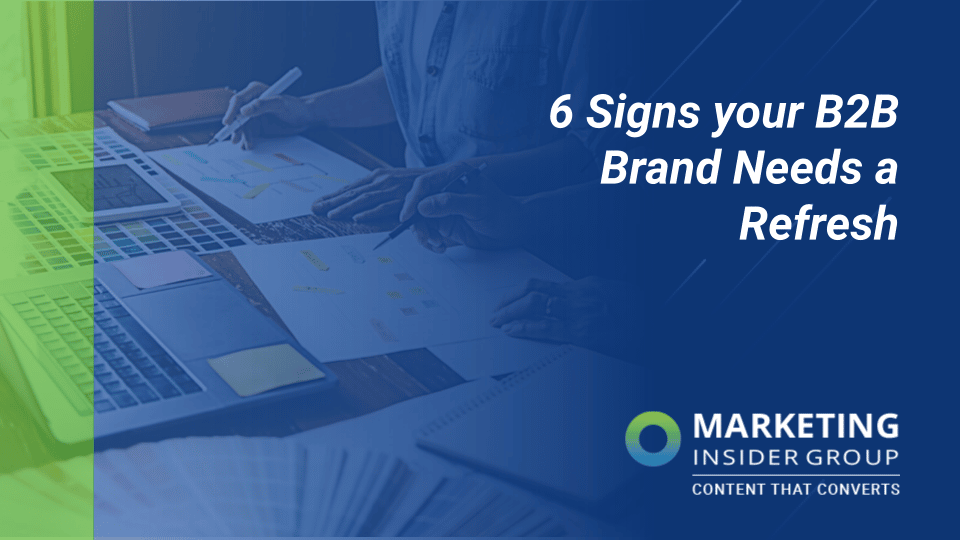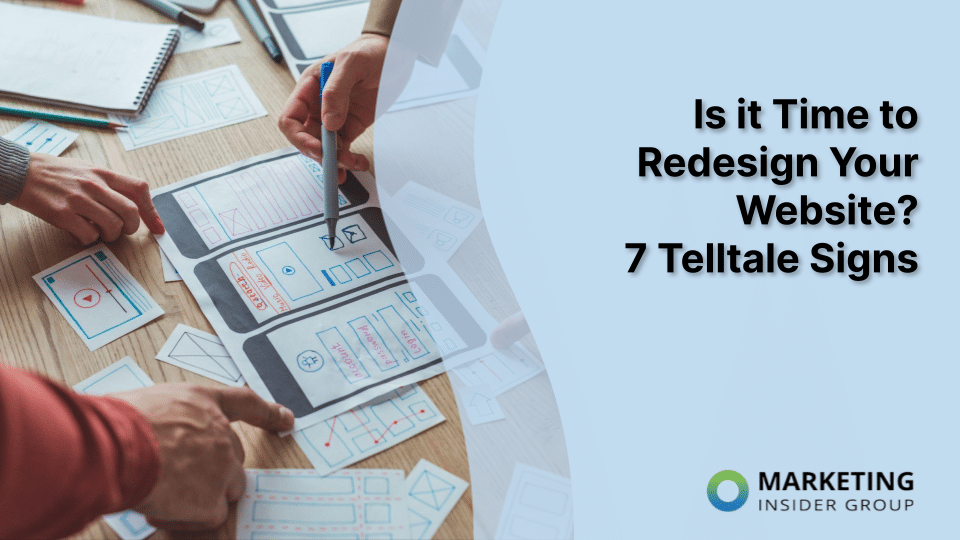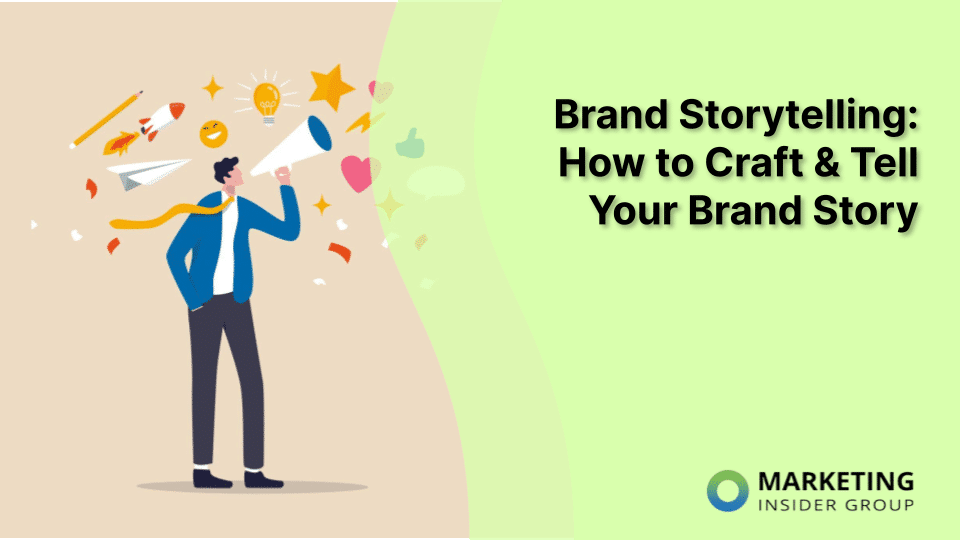
6 Signs Your B2B Brand Needs a Refresh
Coca-Cola spends an average of $4 billion on branding each year.1 Why? To remain consistently recognizable to customers.
It might seem steep, but when prompted, almost anyone can describe the company’s logo marked by red and white script. It’s iconic; thus, it remains top of mind.
We see thousands of ads, brands, logos, and headlines a day, making it hard for businesses to stand out and consumers to make decisions. While traditionally integral to B2C companies, branding has become increasingly significant in the B2B space. At the end of the day, people are at the core of each business, and they value brand recognition and emotional connections.
Branding encapsulates the entire personality and identity of a company. To be seen, heard, and successful, B2B businesses must maintain a strong, modern brand identity. Think about it: confusing branding might convey a confusing offering, outdated branding might indicate outdated products, and dull branding might imply dispassionate or impersonal customer service. You must avoid these connotations to become (and stay) a favorite among competitors, and branding is where prospects form the critical first impression.
Here are six signs that your B2B brand needs a refresh:
1. Your brand identity is inconsistent
Not only should you get your brand out there, but it must be consistent. Otherwise, your brand will reflect inconsistency, making it difficult for your audience to discern reliable and trustworthy businesses. If you have different versions of your logo floating around and various freelance copywriters contributing to one voice, you might portray conflicting messages. Like a good friend, good branding has a friendly face that you can recognize anywhere and anytime, and presenting a brand consistently across all platforms can increase revenue by up to 23%.2
2. Your audience has expanded
Is your company growing? Is your target market changing? From doubling in size to expanding into new locations and entering additional verticals, the audience you spoke to when your company was founded is different from today; therefore, you must talk to them differently. When your audience evolves and your brand doesn’t, you risk not being heard and falling behind those who progress with the times.
3. Your offerings have evolved
Selling products or services becomes instrumentally more difficult when your branding is still focused on last year’s line of offerings—or even last decade’s. Take IBM, for example. In 1924, its logo reflected the typewriters and computing devices manufactured.3 If IBM never rebranded, the company would appear extremely archaic and confusing today. Over time, you’ll likely expand your arsenal of offerings, and you must reflect those changes and additions for all to see.
4. Your logo, color palette, and overall design look outdated
As a modern, cutting-edge, innovative company, your branding should look like it was created next year, not last century. Strategic brand identity design services can significantly impact audience perception and contribute to brand recognition, trust, and reliance. For example, color can improve brand recognition by up to 80%4. If you’re questioning whether or not it’s time to revisit your overall style, the answer is yes.
5. Your brand doesn’t reflect your company’s values
Branding should be entirely your own, not based on other companies. If you try to mimic the success of Apple and Amazon, you’ll be the follower, not the leader. Rebranding is hard work, but when it’s done right, it’ll signify your distinct corporate culture, align the purpose and values of your people and your brand, and produce a strong brand and impressive results.
6. Your prospects don’t understand what you do
Clarity is key. When there’s a lack of understanding around your products, services, and general offering, existing clients won’t ever see the need to expand their partnership, and potential clients won’t understand how you can help them. With solid brand messaging, what you do well will be front and center for all to grasp. Your customer can complete 70% of the buyer’s journey before ever engaging sales, which means unclear messaging would be enough to turn someone away before your team can speak to them.5
Rethink. Refresh. Rebrand.
If you found yourself nodding to this article, you have all the proof needed to refresh and rebrand. So, where should you start? Having brand guidelines in place and sticking to them 100% of the time helps with consistency and upkeep. Every employee can reference rules and techniques associated with logos, colors, fonts, and personality across websites, social media platforms, emails, tradeshows, and so on.
But if your company has never rebranded, you should prioritize a brand upheaval and create a new one that better reflects where you are and where you’re going. A significant refresh should happen at least every ten years, with quick, more intermittent brand refreshes that improve and build upon existing branding every three to five years.6 This will help you evolve with the times and your growth, preventing you from appearing outdated, unclear, or incomplete. Want to discuss what a rebrand or refresh could do for your B2B company? Let’s talk.






